Backyard Birds of Northwest Florida
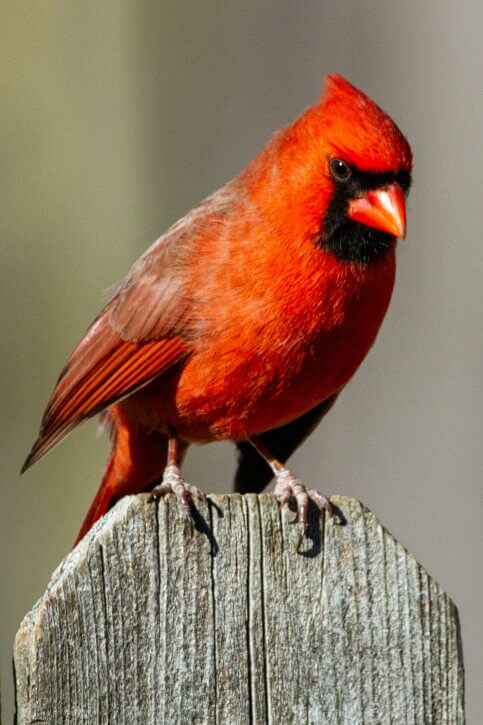
Birds are everywhere. They’re tucked away in the shrubs outside of our homes and apartments, they are bobbing around our backyards and they are foraging at local parks. No matter where you live, birds are nearby, just waiting to be noticed. Once you do, you might find it hard to stop. That’s because birding—the act of appreciating and observing birds—provides a new perspective on the natural world.
According to the Francis M. Weston Audubon Society (FMWAS), a local chapter of the National Audubon Society and Audubon Florida, the most common species of backyard birds in Northwest Florida are the northern mockingbird (the state bird of Florida), northern cardinal, Carolina wren, morning dove, eastern bluebird, tufted titmouse, Carolina chickadee, blue jay, red-bellied woodpecker and ruby-throated hummingbird.
Backyard birding is a great way to observe numerous local species from the comfort of your own home. You’ll be amazed at the variety of birds you’ll see throughout the year. From native plantings and trees to provide safe stopover areas for them to eat, drink and nest, there are a number of ways to attract more feathered friends to your yard or garden.
Native Plants and Trees
According to University of Florida (UF) Department of Wildlife Ecology and Conservation Professor Mark Hostetler, how you landscape and maintain your yard can make a difference for both bird conservation and the environment. In most cases, native plants are best-suited to provide food for birds and require little maintenance.
One of the most effective ways to attract birds to your backyard is to use native plantings to provide the natural habitats that have supported them for thousands of years. FMWAS Field Trip Chairman Lucy Duncan, says that the most fool-proof menu you can offer migratory and native birds are Florida’s native plants and the insects that feed on them. These food sources provide the right nutrients at the right time, supporting birds through all seasons of the year and all parts of their lifecycle.
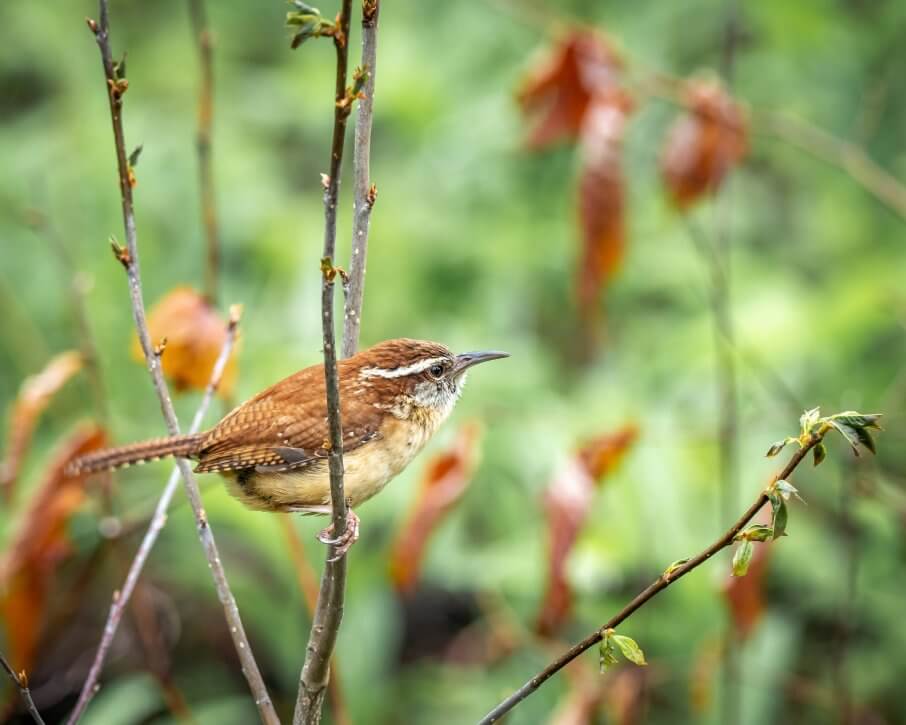
“Native species of trees and plants attract the most birds because those plants evolved along with the insects on which birds thrive. For example, oak trees support 534 species of caterpillars whereas non-native trees will support only a few by comparison. There are at least 16 species of native trees that supply upwards of 125 species of caterpillars that are eaten by birds. Natives also support natural food webs that have many benefits of ecological services,” Duncan explained.
Planting species that bear seeds and fruits will also attract an abundance of birds. Any native plant (in the right place) can provide shelter for birds and food for insects, too. Many birds feed on the berries of native wildflowers and plants such as Simpson’s stopper, berry-producing hollies, American beautyberry, red mulberry and more.
To keep hummingbirds happy, incorporate nectar-producing plants like coral honeysuckle, firebush and scarlet salvia into your garden. Native fruit-bearing plants, such as Chickasaw plum, passion flower, pawpaw, wax myrtle, native persimmon and seagrape are also excellent food sources for birds.
Last but not least, brush piles and snags in your yard provide shelter to insects, making them a source of bird food and shelter for brush and cavity-nesters. Brush piles are magnets for small bird species, like Carolina wrens.
Feeder Selection
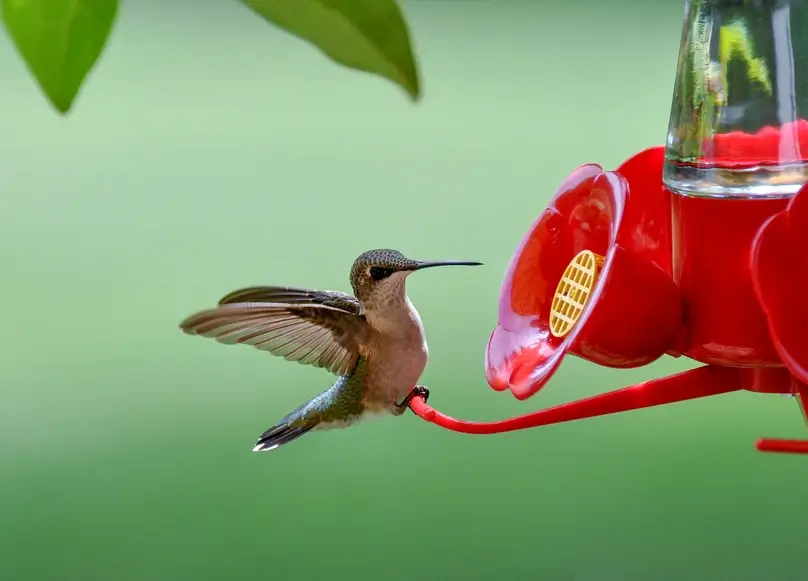
One of the earliest written accounts of bird feeding in the United States dates back to 1845, when Henry David Thoreau reported feeding birds at Walden Pond. According to the University of Florida’s Wildlife Ecology and Conservation Department, the first commercially made bird feeder was designed for hummingbirds and was introduced to the market in 1926. Today, more than 50 million Americans put out a billion pounds of bird food each year.
Bird feeders provide a great way to observe both migratory and local birds at close range. Before placing bird feeders in your backyard, consider the bird species you would like to attract. This is because different birds are attracted to different types of bird feeders and foods.
“Some feeders are non-selective and utilized by a range of bird species, while others are more selective, attracting only one or two specific species. If you are interested in attracting a diverse selection of birds to your yard, consider installing at least two different types of feeders,” Hotstetler explained.
Food Types
The type of food you stock in your feeder also determines which birds you will attract. Some birds prefer seeds, fruit or insects and a small number like nectar. You can find a variety of pre-mixed bird seeds for your feeder in the stores, which vary in content, cost and quality. When seed mixes are used, birds will empty your feeder quickly, eating only the seeds they like and scattering the rest on the ground. Hostetler recommends using a single type of seed, or creating your own seed mix.
Black-oil sunflower is the preferred seed of many birds and generally serves as the best all-around attractant. Hostetler recommends selecting specific types of foods to attract a variety of native birds to your feeder including, safflower, millet, cracked corn, nigher or thistle, milo and wheat, oats, suet, peanuts and sugar water.
There are a range of other foods you can also try in your feeder to attract specific species. For example, bluebirds and orioles love mealworms. These birds, along with house finches and woodpeckers, also love fruits such as apples, oranges, peaches, berries and bananas. Get creative, try using a variety of these different foods in your feeder to see what birds it brings to your yard.
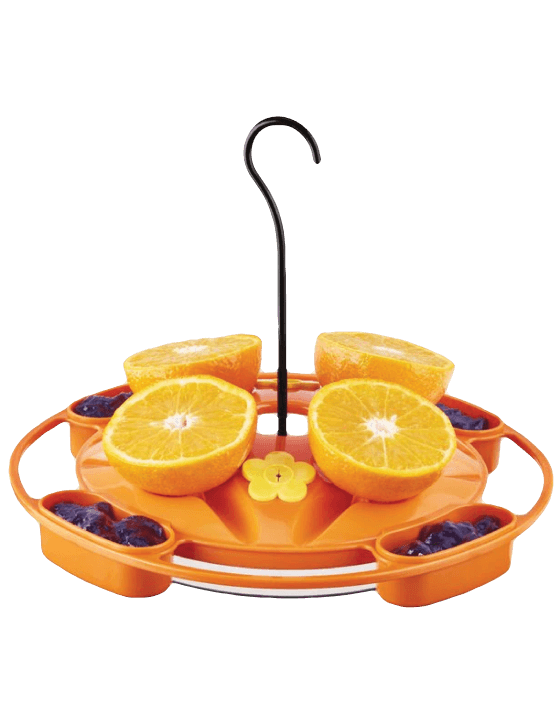
The most common types of feeders used to attract a variety of backyard bird species include:
Tube feeders— This type of hanging feeder is a hollow cylinder, usually made of clear plastic or glass so that the seed is clearly visible, with multiple feeding ports and perches. Tube feeders can be filled with a variety of different seeds. Tube feeders with perches and feeding ports are often preferable because they are less easily damaged by squirrels.
Hopper feeders—These large feeders, as with tube feeders, are primarily used to provide seed. Hopper feeders come in a variety of whimsical designs, but the most common resembles a small barn with clear plastic sides positioned in a V shape. Hopper feeders typically hold more seed than other feeders and require filling less often. Hopper feeders attract all the same species as tube feeders, along with larger birds like blue jays, cardinals, grosbeaks and woodpeckers.
Suet feeders—Woodpeckers, bluebirds, cardinals, chickadees, jays, titmice and wrens are all regular visitors to this type of feeder, which is usually a simple wire cage sized to hold a suet cake. The birds that visit the feeder cling to the wires and peck at the suet inside. Look out for bottom suet feeders that are specially made for clinging birds like woodpeckers and nuthatches that can hang upside down and feed.
Platform feeders— These tray feeders consist of a flat, raised surface on which seeds, fruits and other foods are spread. Some also have roofs, which help to keep the seeds dry. Platform feeders placed close to the ground can be used to attract a slightly different bird audience that includes ground feeding doves, juncos, blackbirds, towhees and sparrows. Platform feeders located higher above the ground attract many of the same birds as the tube and hopper feeders.
Nectar feeders— Nectar feeders are primarily used by hummingbirds. They are designed to mimic the flowers from which these birds get their nectar and are usually filled with sugar water. They come in a variety of shapes and sizes, but most feature plenty of red, since this is a very attractive color to the tiny birds. Orioles, cardinals and woodpeckers will also use nectar feeders with larger feeding ports.
Fruit feeders—These hanging feeders come in a mix of styles. All are designed to hold large fruit pieces consumed by bluebirds, orioles, house finches, woodpeckers and a range of other species.
Feeder Location
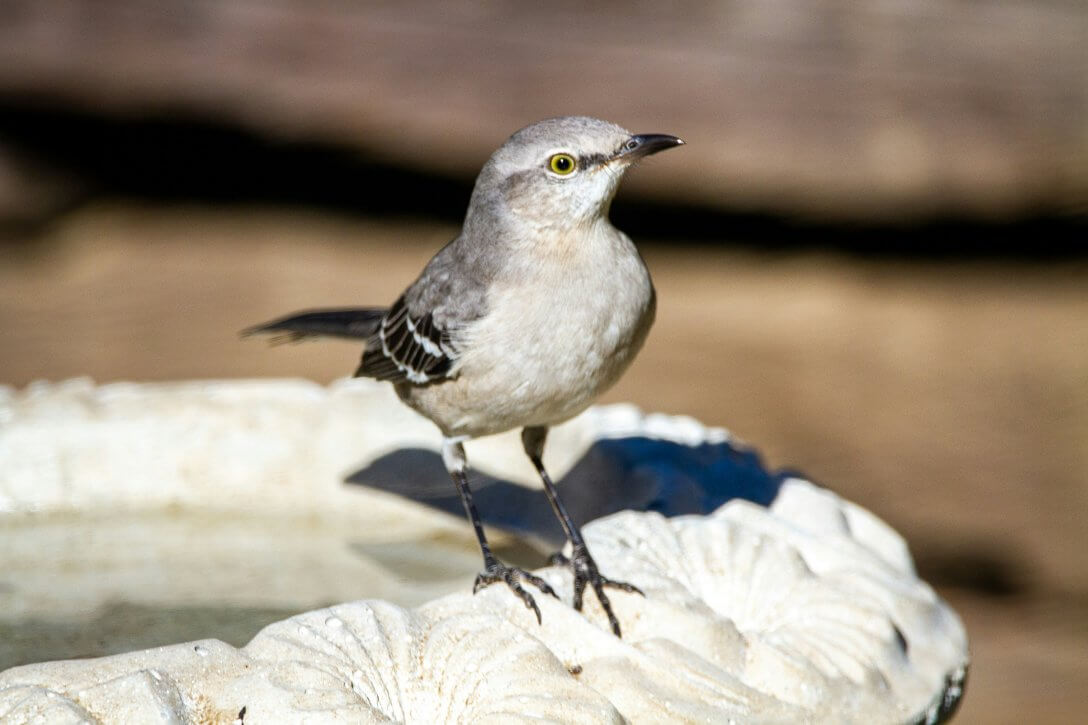
Once you have selected a feeder, you will need to determine a location for it in your yard. When scouting for a location for your feeder, there are a number of things you will need to consider. Firstly, you will want to make sure you have a good view of the feeder from where you intend to watch visiting birds.
You should also think about the different birds that will visit the feeders and their feeding styles. Some birds feed on the ground and others at shrub and tree height. To minimize crowding and attract the greatest diversity of species, provide low platform feeders for ground feeding birds, and hopper, tube, suet and raised platform feeders at different heights for shrub and treetop feeders.
Most birds that use feeders, prefer to have shrubs and trees nearby where they can perch or escape from aerial predators such as hawks. However, placing your feeders among or too close to shrubs and trees puts feathered visitors at increased risk from ground predators, particularly domestic cats. Duncan recommends placing feeders 10 to 15 feet from bushes to provide perching spots and a place to escape from aerial predators.
If you have the space, consider placing several feeding stations throughout your yard. This is effective for two reasons. First, some birds like to feed near vegetation and others, out in the open. By placing a number of feeders in different places, you will draw a greater diversity of birds. Secondly, it will prevent overly aggressive individuals from chasing off other birds who are attempting to control access to feeders.
Cleaning
The ability to keep feeders safe and clean is much more important than the style of feeder. It is crucial to maintain a clean bird feeding environment to discourage disease. Feeders should be cleaned at least once every two to three weeks to ensure they do not accumulate moldy and decomposing seeds, bird droppings or other contaminants that can make birds sick. The heat and humidity of Florida provide perfect conditions for mold growth, so during periods of warm or wet weather, it may be necessary to clean them more frequently.
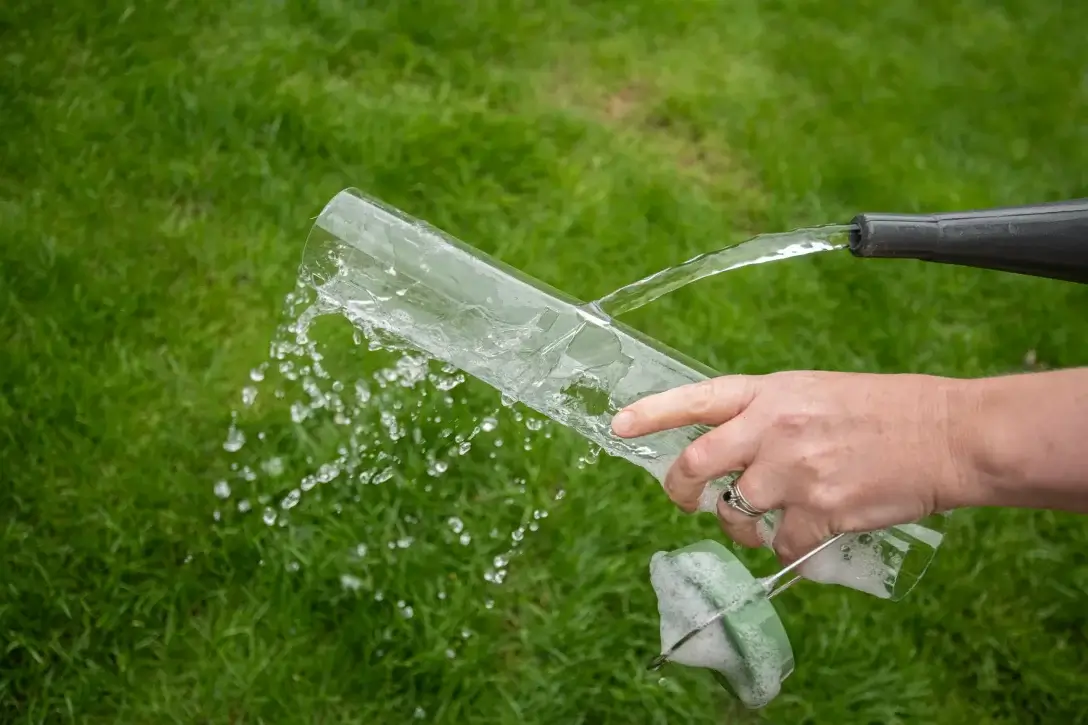
“Although birds are quite adaptable to different types of feeders, the main thing to remember is to keep your feeders clean,” Duncan explained. “To clean glass, ceramic and plastic bird feeders (except hummingbird feeders), a 10 percent bleach solution (1 part bleach to 10 parts hot water) should adequately kill any bacteria and help prevent the spread of disease.”
Duncan recommends using hot, soapy water and a bristled brush to clean wooden feeders, in order to prevent residual contaminants from seeping into the porous wood. For hummingbird feeders, use hot water and a bottle brush.
Just remember to be patient when you first install your feeders, as it might take some time for birds to find the new food source and start using them. If no birds visit your feeder within one to two weeks of setting it up, Hostetler recommends sprinkling some seeds on the ground in your yard to help them find it. If the birds still do not come, it may be that they are uncomfortable with the feeder location. Try moving your feeder to a new location to see if this helps.
Interested in taking your passion for birding beyond the boundaries of your backyard? The FMWAS hosts a number of bird walks, field trips, classes and birding-related social events throughout the year. Annual membership dues are $20 and include membership into the National Audubon Society.
For more information on Northwest Florida’s backyard birds, feeder selection, native plants for bird-rich habitats and more, visit ifas.ufl.edu or audubon.org.